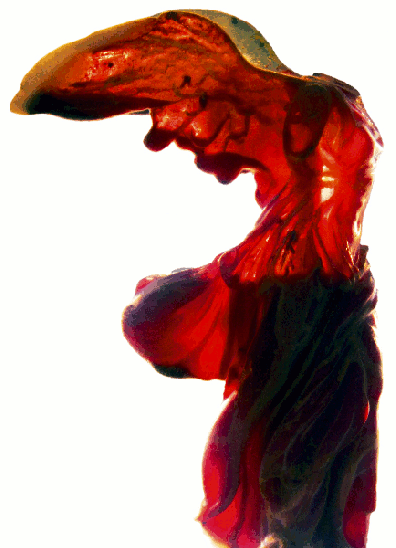Victory over the Future
Venice, 7.06.2009—22.11.2009
exhibition is over
Russian pavilion 53rd International Art Exhibition La Biennale di Venezia 2009
Share with friends
For the press
Victory as a phenomenon has an endless number of philosophical, culturological, social, ethical and artistic interpretations. Victory is also an existential and emotional state, one of the primary goal-setting factors in the behaviour of each individuum separately and each socium as a whole.
Conceived in 1913, Mikhail Matyushin, Kazimir Malevich and Alexei Kruchonykh’s acclaimed Futurist opera’Victory over the Sun’ was a portent of impending catastrophes in the early 20th century. At the onset of the 21st century society is once again in crisis, paralysed more by fear of the future than by economic stagnation.
Russian Pavilion participants Pavel Pepperstein, Alexei Kallima, Gosha Ostretsov, Andrei Molodkin, Anatoly Shuravlev, Irina Korina and Sergei Shekhovtsov refer to personal artistic experience and Russian avant-garde traditions deeply rooted in contemporary Russian art for their problematisation and metaphorisation of the theme’victory over the future’, creating their own artistic cosmos.
An outstanding representative of the Moscow conceptual school, Pavel Pepperstein is best known for absurdist drawings, his landscapes of the future. At the Venice Biennale he presents a series of works in which uncompromising Suprematist elements sprout through the nebulous contours of future megalopolises. The utopian energy of the Russian avant-garde takes root on the decrepit trunk of modern civilisation, in the hope that this graft can sprout viable shoots at a new turn in the spiral of history. At the exhibition the artist’s own rap chant will be interspersed with Igor Stravinsky’s’Rite of Spring’, composed in 1913.
Anatoly Shuravlev’s work relates to the problem of historical memory. Hundreds of 1cm-diameter miniature photographs of 20th-century figures that changed the course of history in some way — from Gandhi to Einstein and from Churchill to Picasso — are arranged on chaotic, abstract black blots that occupy the entire space from floor to ceiling like black holes. Play with scale, structure and texture makes the photographic material particularly striking and raises the question of how the future is revealed through the past.
Andrei Molodkin presents a multi-media installation of two glass sculptures with hollow silhouettes representing Nike of Samothrace, the symbol of victory. One sculpture is filled with pulsing black liquid — oil, the other with red — blood. Video cameras are directed at the sculptures. The projection on the screen combines the two images so that streams of black and red pulsate inside Nike of Samothrace, bringing her to life and symbolising the ambivalence of any Victory.
Alexei Kallima creates vast frescoes portraying stands crowded with supporters at a football match. They are convulsed with the joy of victory, or the despair of defeat. The frescoes are covered with fluorescent paint only visible in ultra-violet light. When the visitor is a certain distance away from the fresco, a sensor extinguishes the ultra-violet lamps. The visitor finds himself in a white wasteland, perceiving the emptiness as an inevitable consequence of triumphant euphoria.’Rain Theorem’, the title given to this project, refers to the theory of chaos and the virtual impossibility of predicting anything, whether it is the outcome of a sports event or the course of history.
The artist Irina Korina works with flickering factors and states, articulating the gap between recollection and presentiment. Her enormous fountains made of old, multi-coloured plastic tablecloths call to mind strange biomorphic forms filled with turgor pressure.
Sergei Shekhovtsov turns his hand to the heraldry of the Russian Pavilion, which was built by the great Russian architect Shchusev in 1914. His foam-rubber installation for the facade of the pavilion reproduces the way symbols of a new age are transformed into the new heraldry.
Gosha Ostretsov has devised an installation with a series of abandoned rooms, in the last of which a mechanical mannequin sits at his desk. This is the artist working on sketches for future projects. As the production of an oeuvre that outlives the creator, artistic activity by its very nature represents a victory over the future.
Olga Sviblova
Curator of the Russian Pavilion



